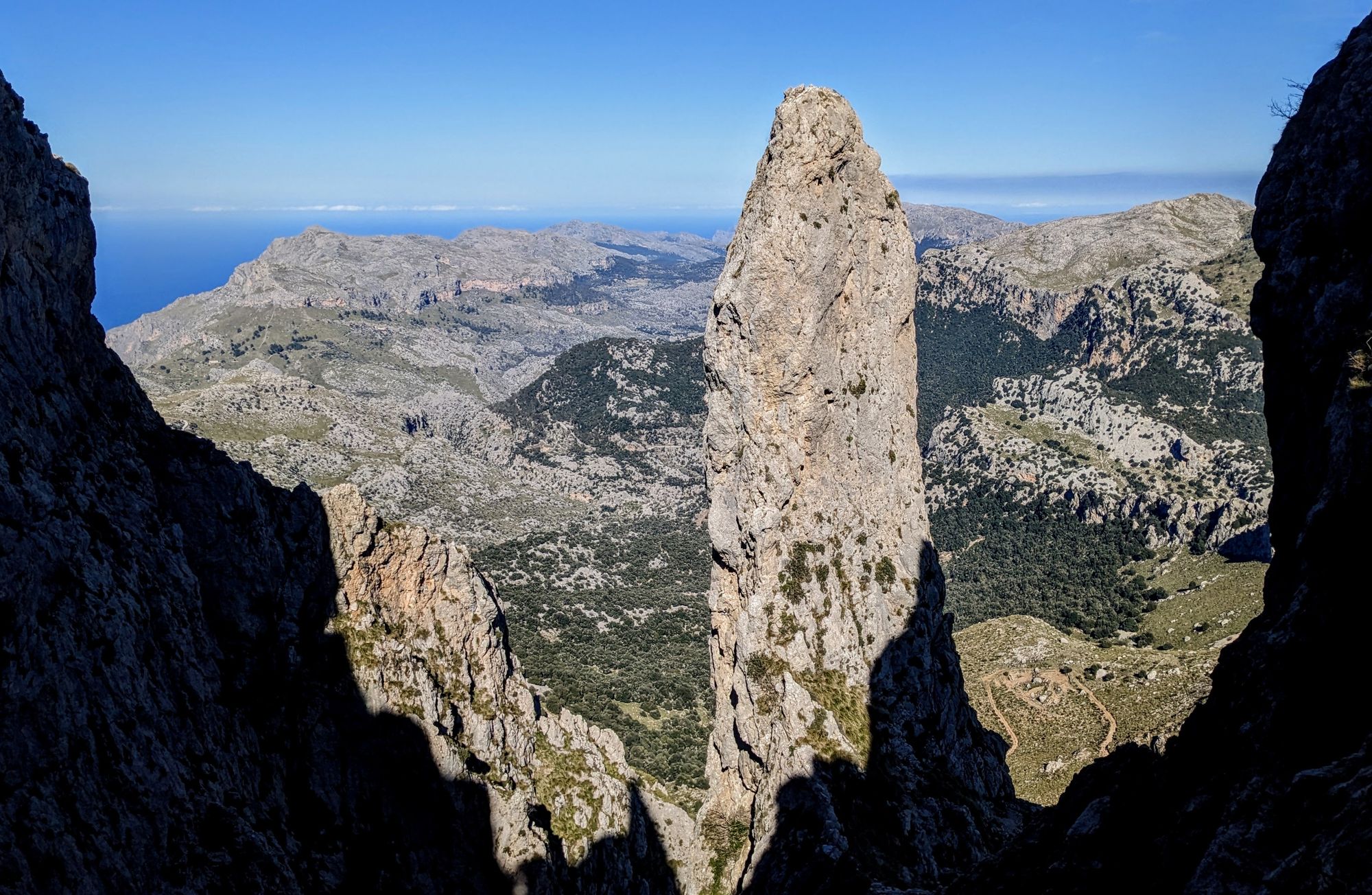Quick info
- Possibly the most iconic alpine climb in the Tramuntana
- Route on a free standing spire right next to the highest mountains of the island on solid rock.
- Fixed ropes to reach base of the climb
- 5 pitches / 170 meters
- 4b / 4b / 4c / 5b (4c/A0) / 4c
- Trad protection / fixed gear at belays / crux pitch bolted sport
- Descent via rappel only
General
The climb up the Agulla de Frare tower is definitely the most well known alpine multi-pitch on Mallorca and that is for good reason. The spire is standing tall in the beautiful and very alpine setting between the highest mountain Puig Major and the massive slopes of the Puig de ses Vinyes.
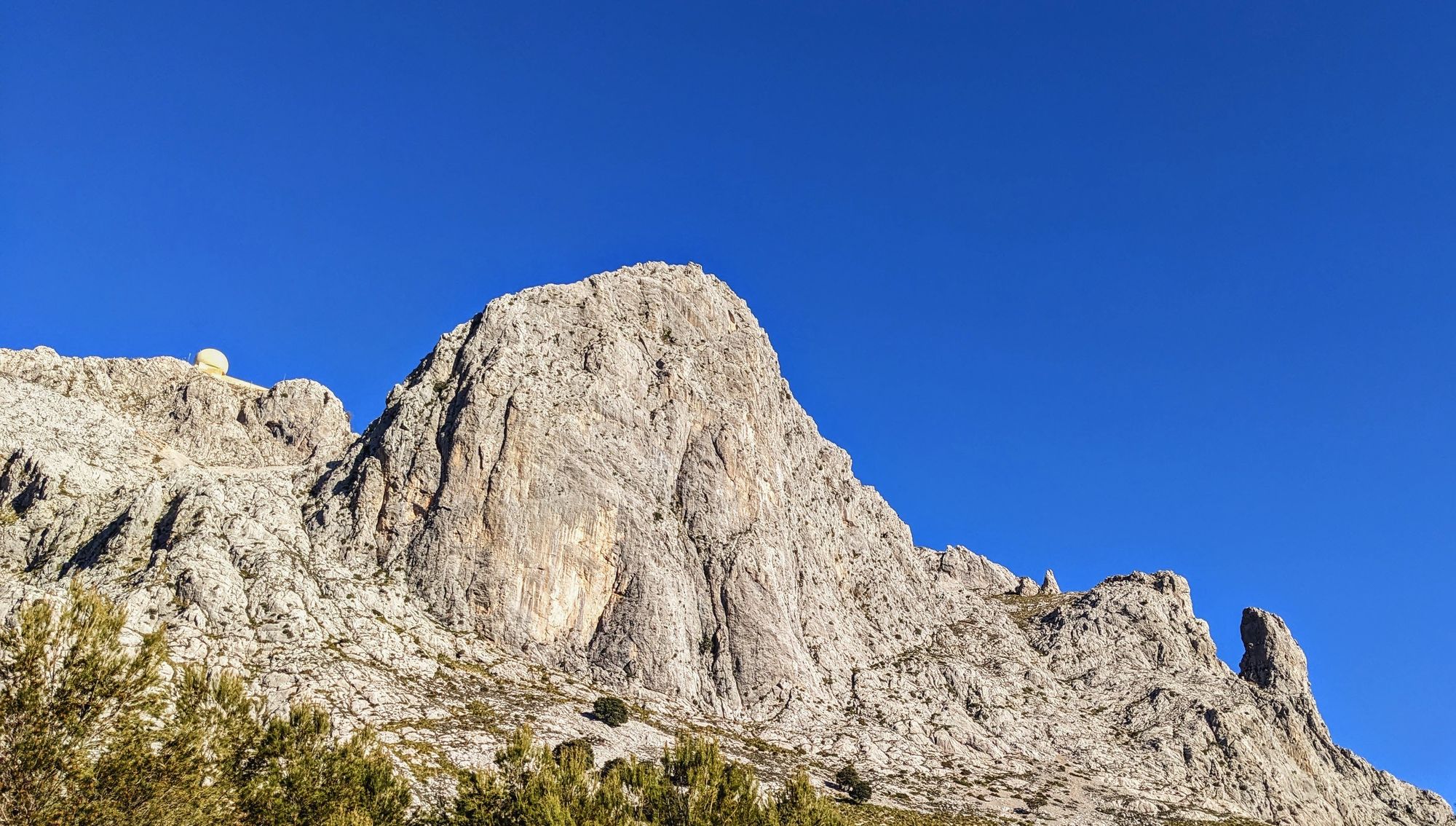
Its valley side (which is climbed) stands an impressive 250 meters tall and looks steep and exposed. The tower peaks out at 1.202 meters. The climbing is only partly protected, fairly long, very exposed and hard enough to keep any climber engaged all the way.
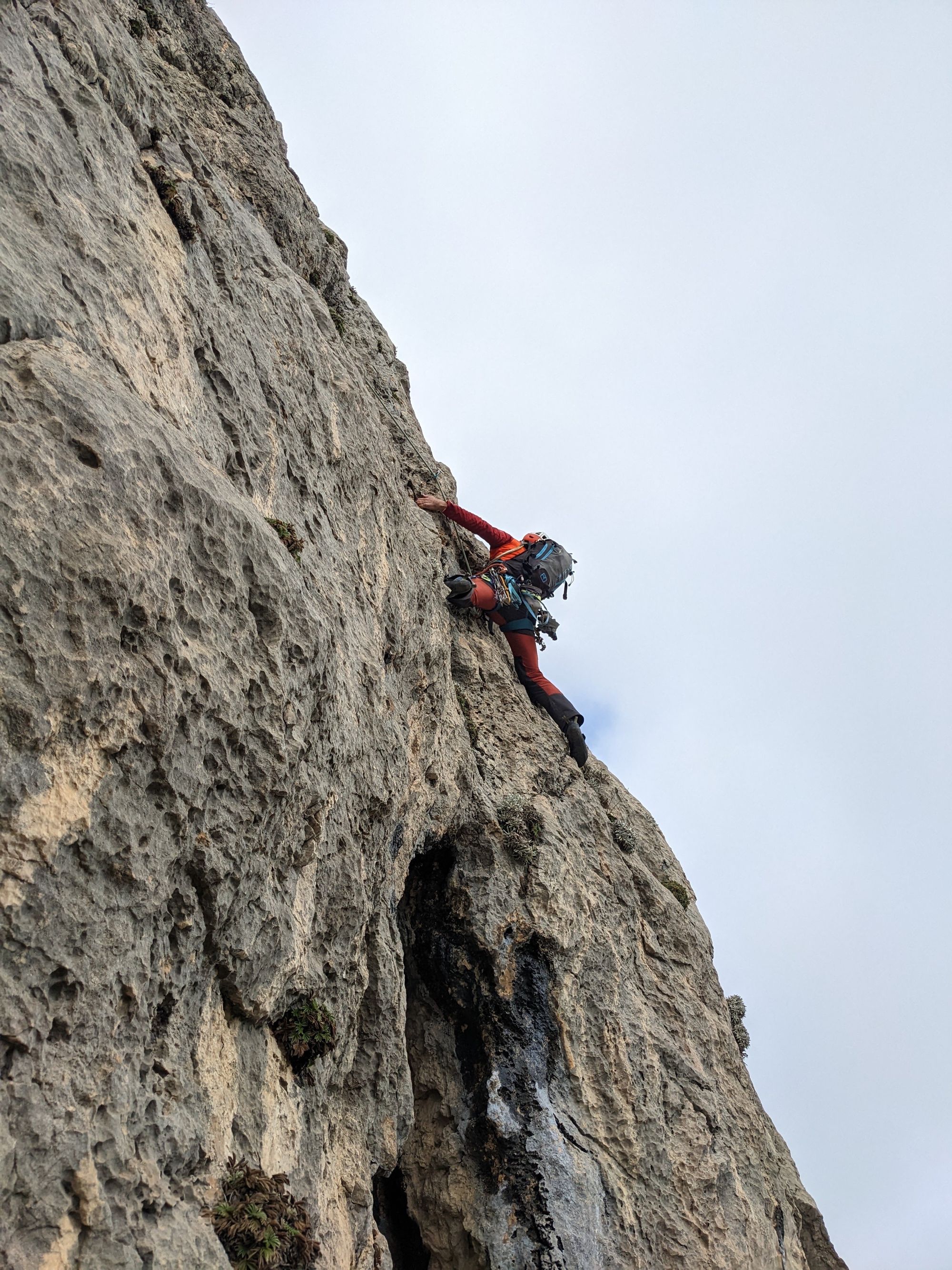
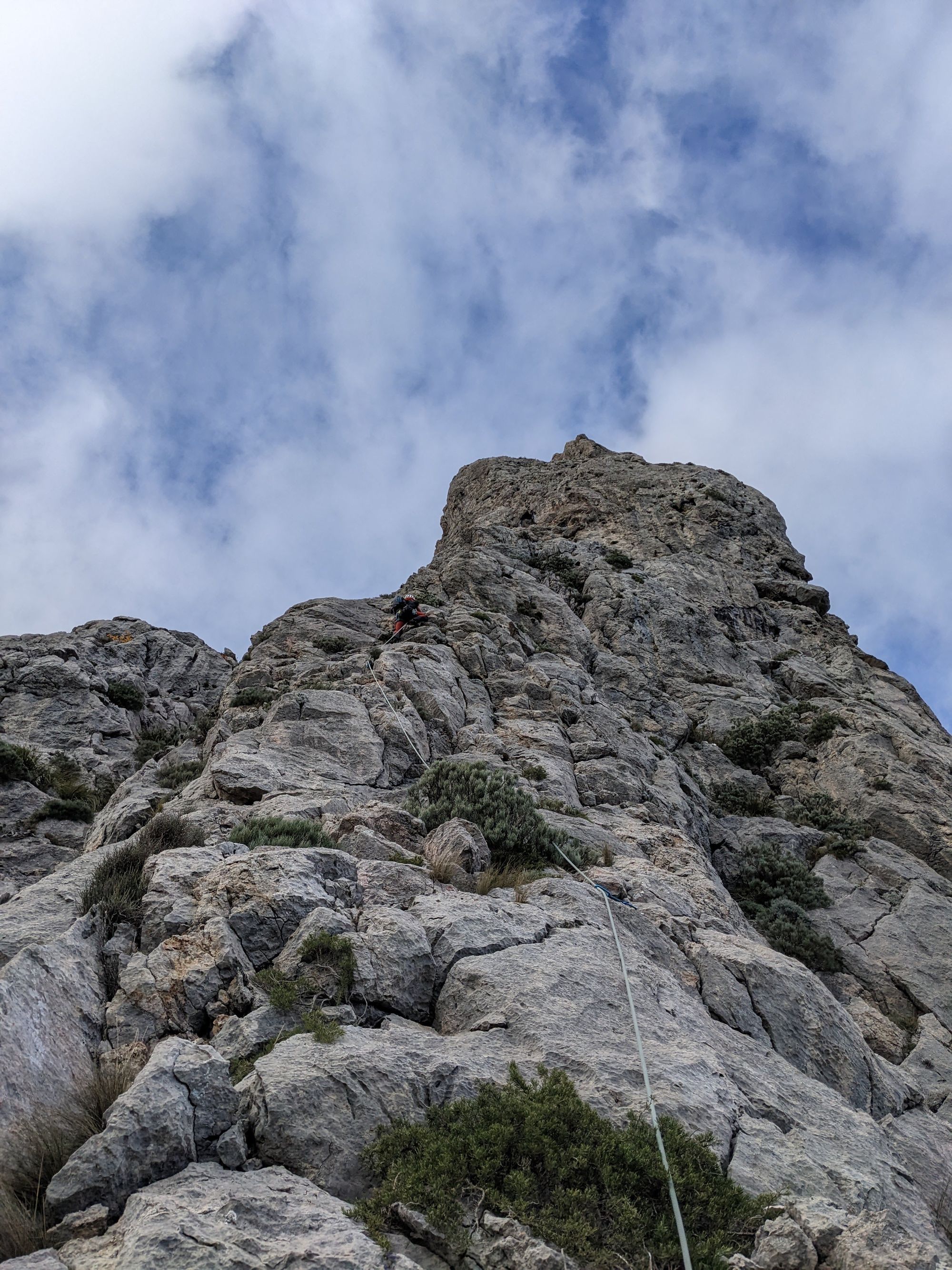
Combine this with the bushwhacking approach and fairly technical descent and you have everything you need for a great alpine adventure.
You can find a tour report on this climb here.
Logistics
The drive up to the Tramuntana can take quite a bit of time and taking an early start might make sense for this outing. Either drive up from Soller or Caimari. Park along the road right at the military base.
There are no accommodations close by however the drive back down can be combined with a visit to the Lluc monastery.
Approach and descent

Find the 4x4 track to the left of the closed off road leading up to the radar station on Puig Major. Make sure to not walk on the main road, which is part of the military facility.
After about 10 minutes, cross the main road and continue walking up the trail towards a wooded area. To the left you can see the impressive wall of the Paredon de Puig Major and a bit further ahead the Agulla de Frare rock spire. Make your way through the wooded area (no clear path) until you reach the other end and a fence.
Cross the fence via a small ladder and continue towards the spire until you reach a small canal with another fence - it can be crossed leftwards at the highest point of the canal. Walk and scramble on keeping the spire a bit to the left until you cross under it. You will find the beginning of the fixed ropes leading up to the base of the climb.
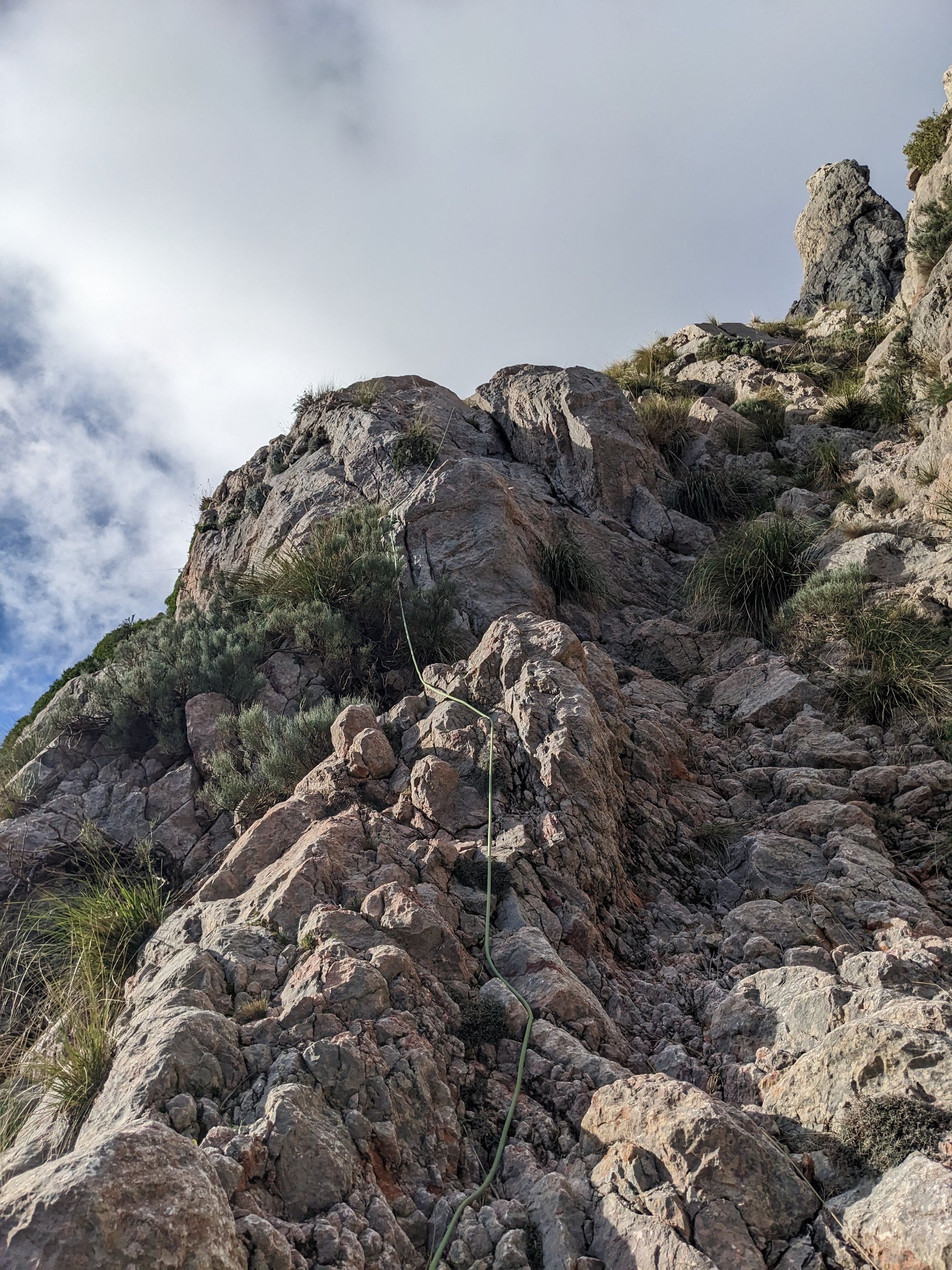
We would recommend gearing up before going up the fixed ropes. Follow the ropes for about 80 meters or ascend before breaking out left under a rocky protrusion and scramble on until you can see the introductory rip leading up the tower. Take care in this section that is quite exposed and definitely has some „no fall“ parts.
A clear indicator that you have reached the base of the climb is a partly vegetated, steep canal with a single bolt about five to seven meters higher up on the right side.
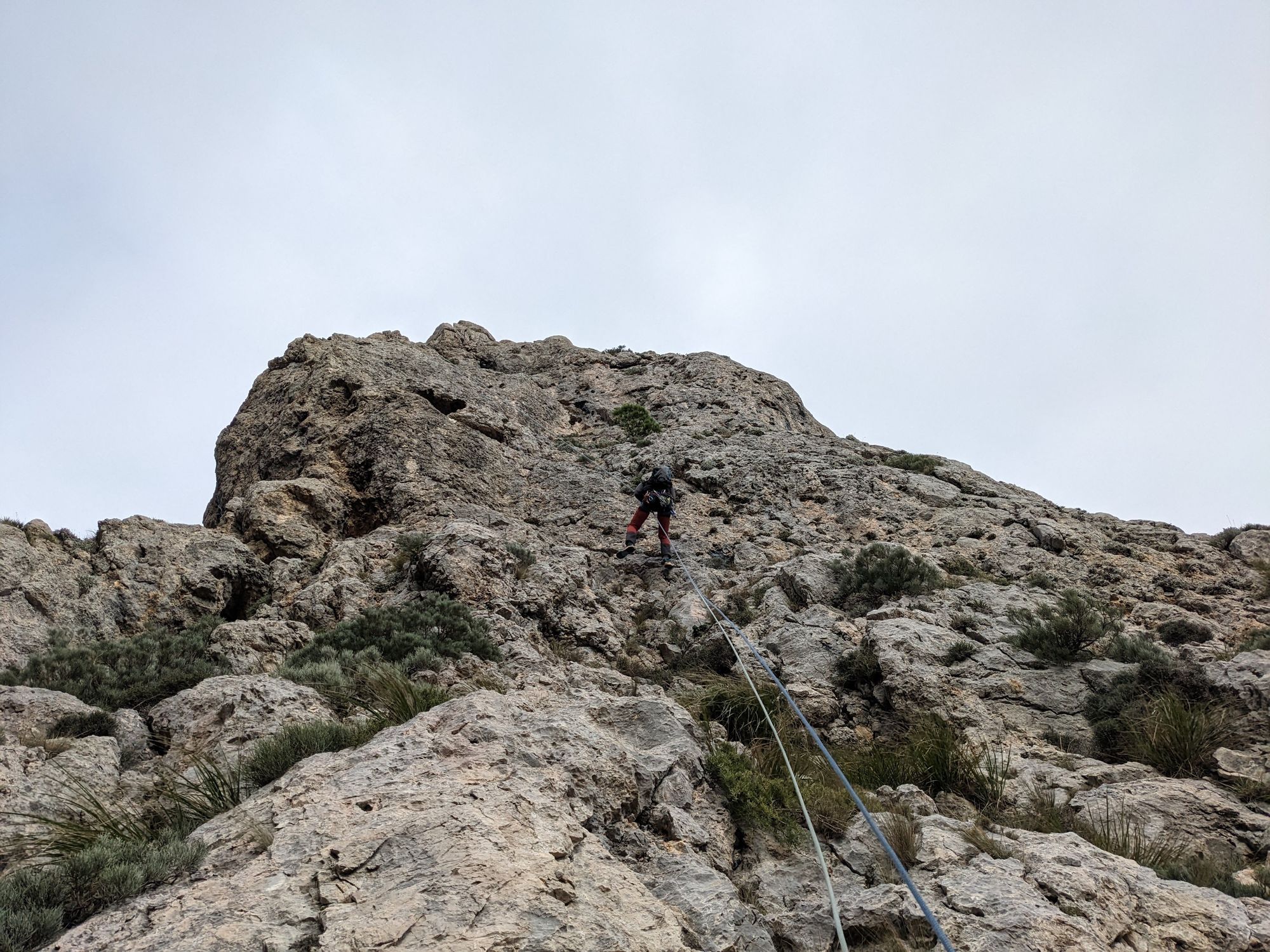
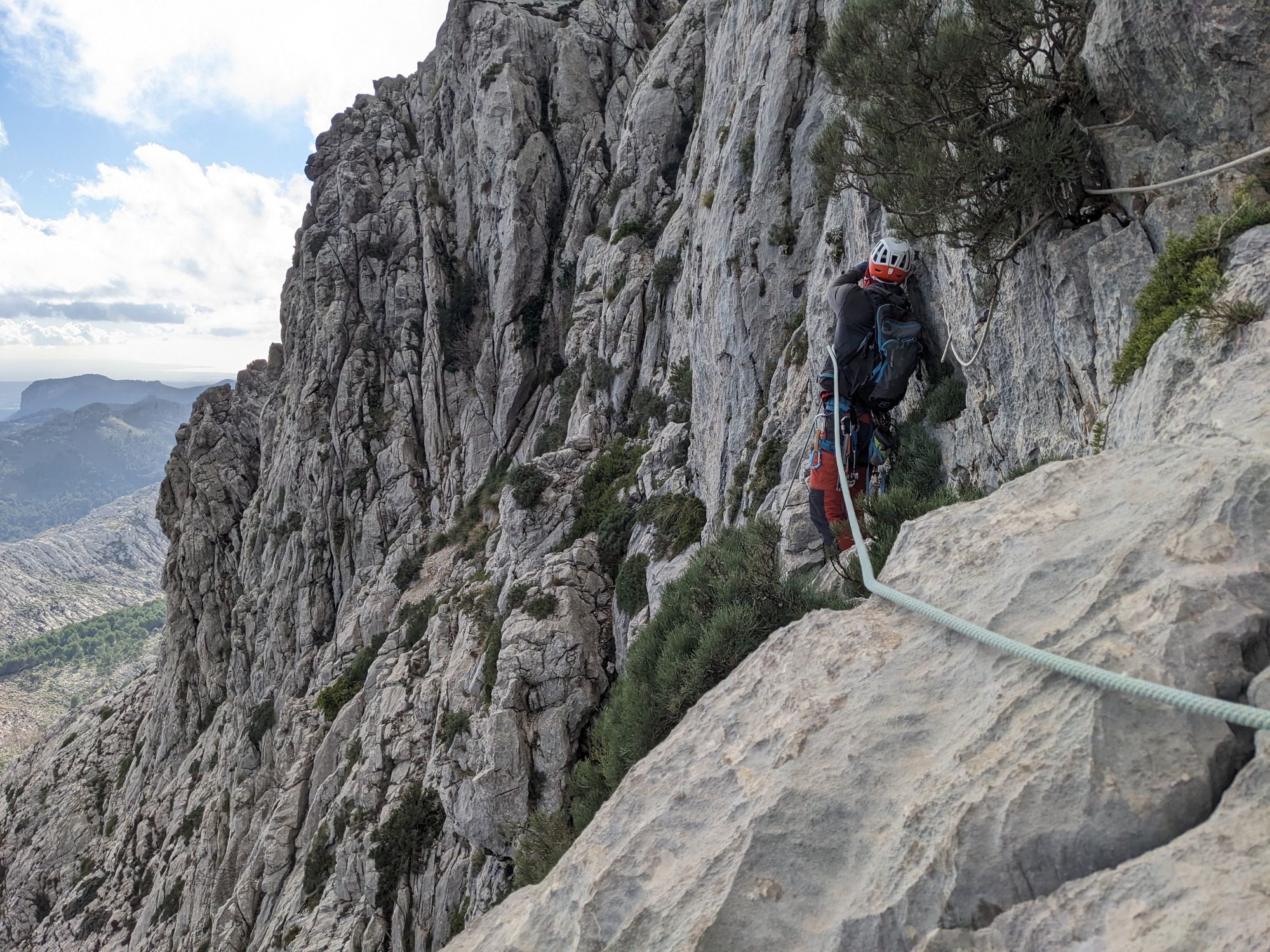
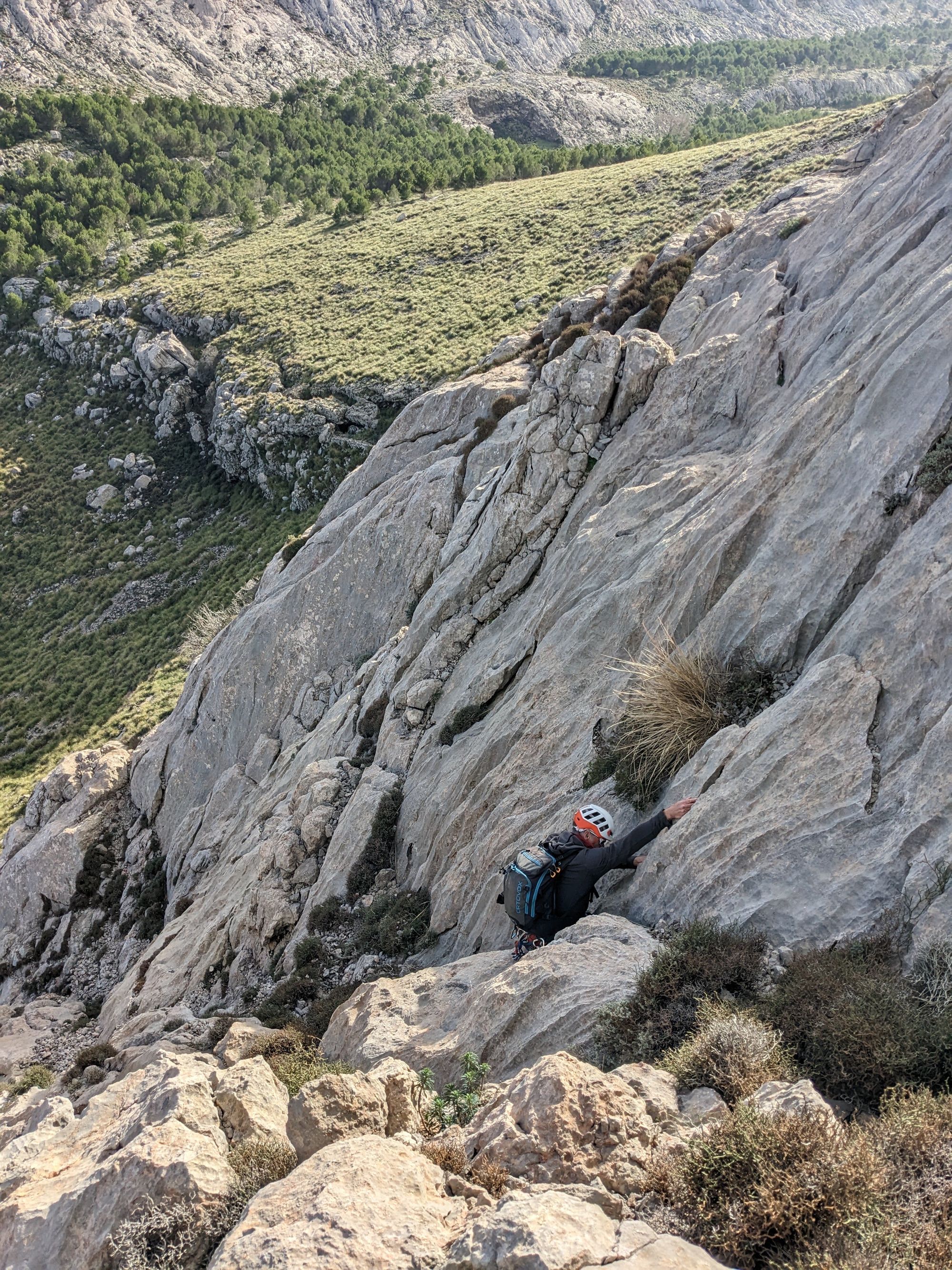
The descent is split into two parts. First, rappel off the top of the tower towards the south-east. There are a number of expansion and glue bolts to choose from. From the Coll you reach via this 50 meter rappel, either make your way north around the tower to find the canal leading back down to the fixed ropes from earlier.
Or alternatively continue about 75 meters south-easterly on the Coll until you see a rope leading to another rappel station for a second 50 meter rappel. After the second rappel you can store the ropes and scramble down still south-easterly towards the base of the valley. The descent is quicker but more technical!
From the valley floor retrace your steps back to the car.
Technical information
- The climb is separated into five pitches totaling 170 meters of climbing.
- The pitches vary greatly in length and only feature a few bolts and fixed gear (at the belays), however the crux traverse pitch 4 is fully sport bolted.
- Gear: two 60 meter ropes (for rappels), 8 quick draws, slings (60 and 120 cm), small and medium cams, nuts.
- East facing and exposed to wind. Tops out at over 1.200m above sea level.

Climbing and pitches
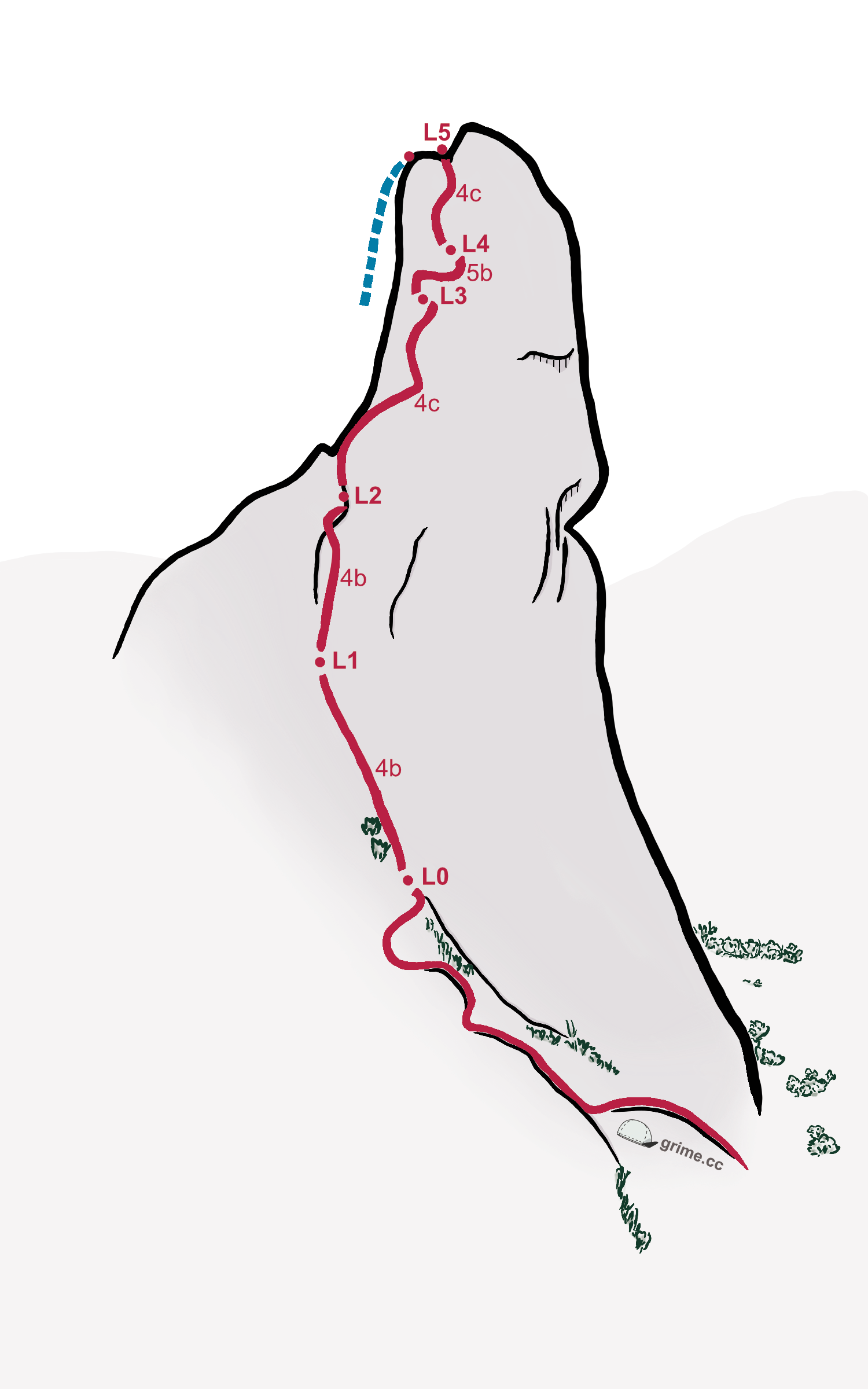
Mostly wall climbing on big holds with good feet. Impressively steep and exposed on pitches 3 to 5 for the grade. The crux pitch is a traverse with fairly bad feet.
The whole climb takes about 2.5 hours and the fairly complicated descent another 1.5 hours.

